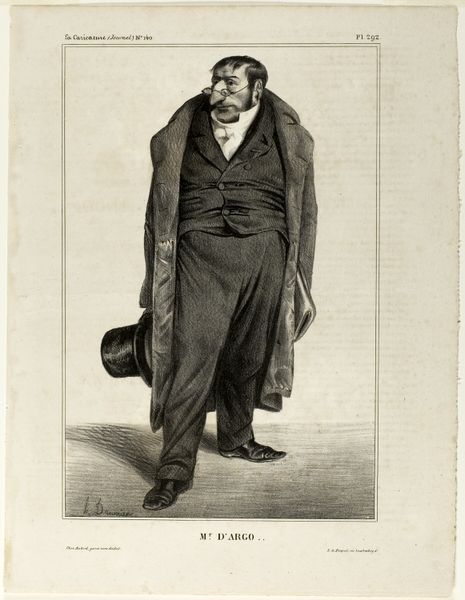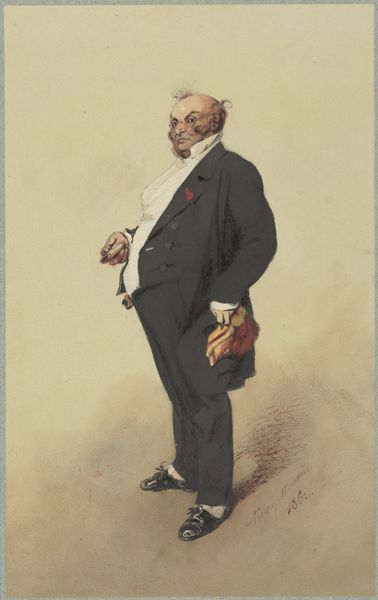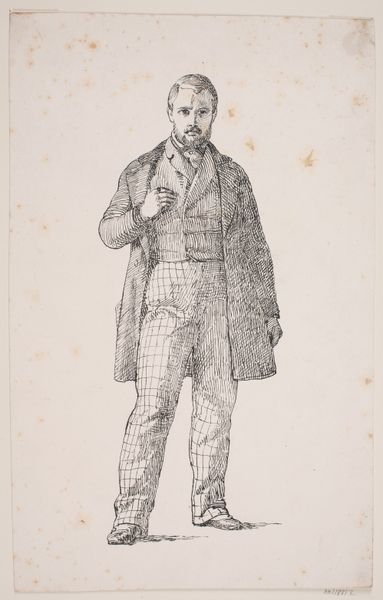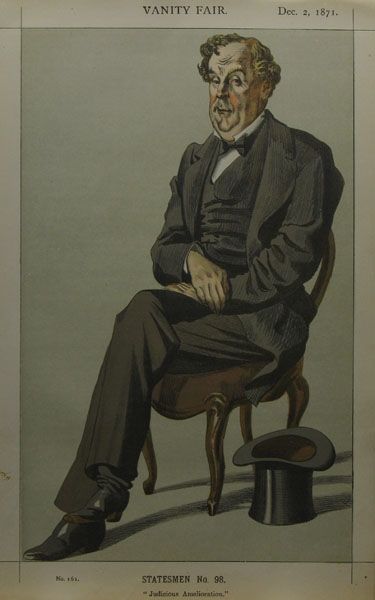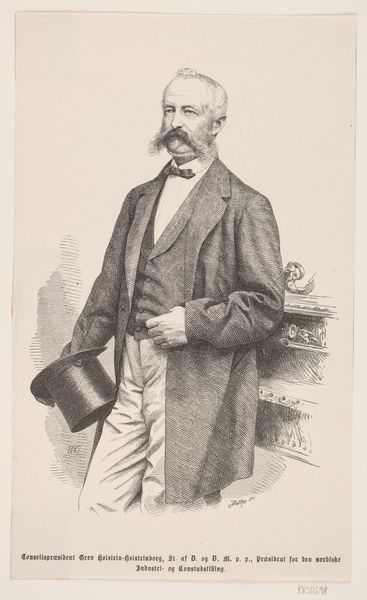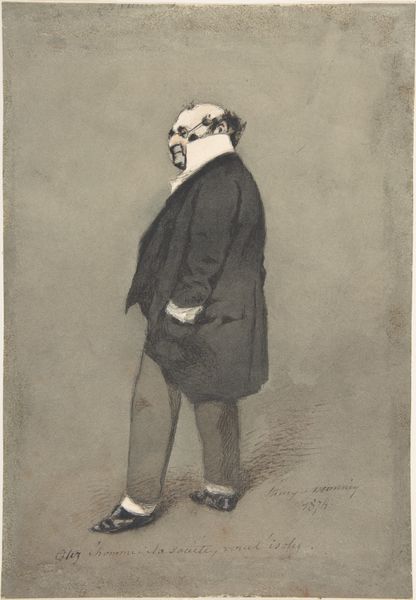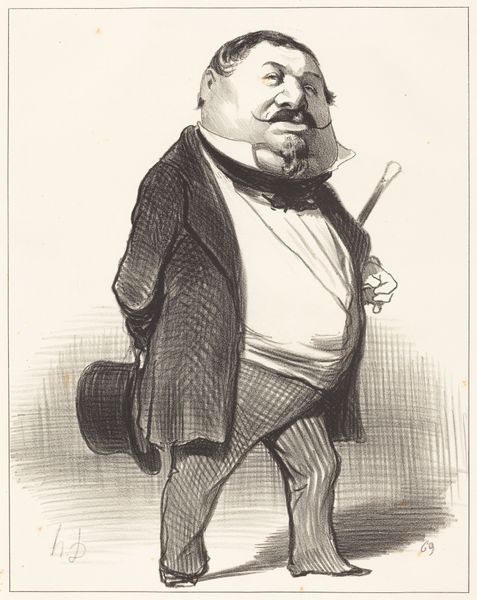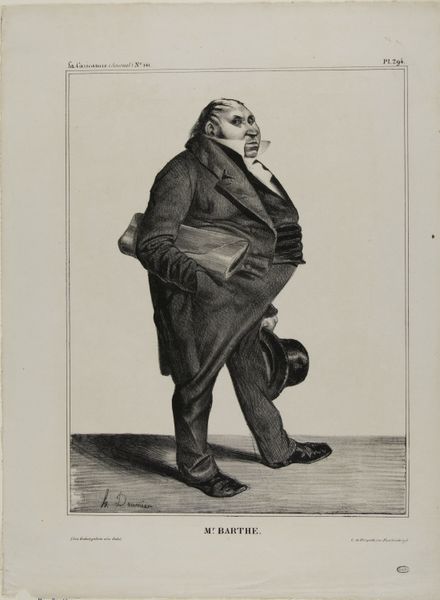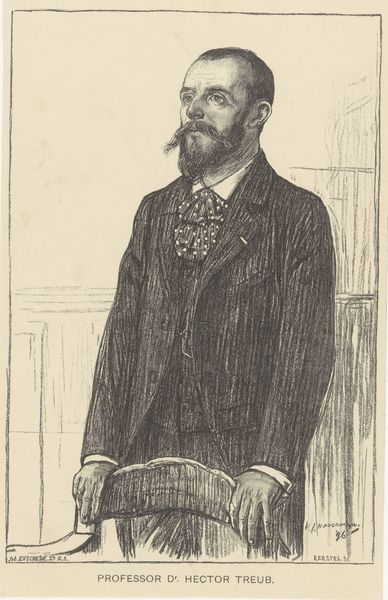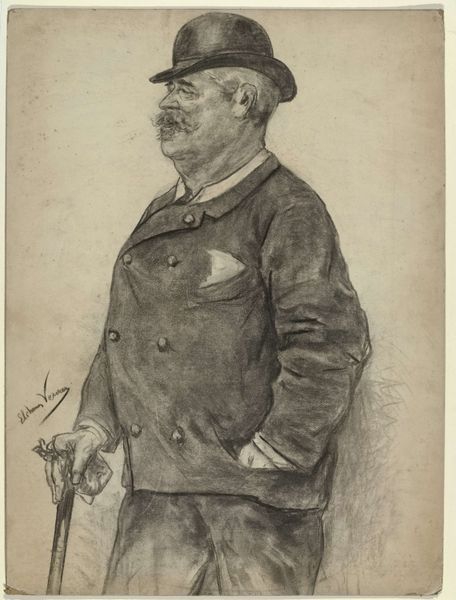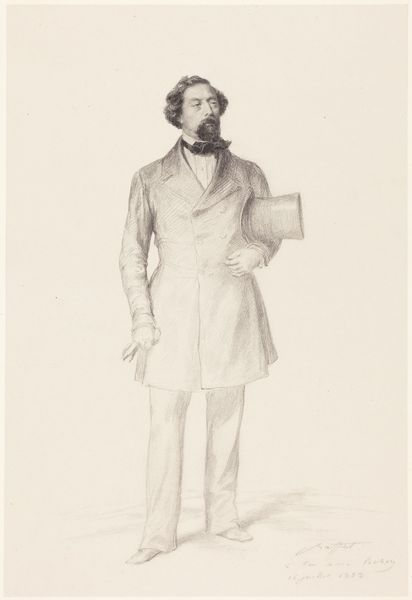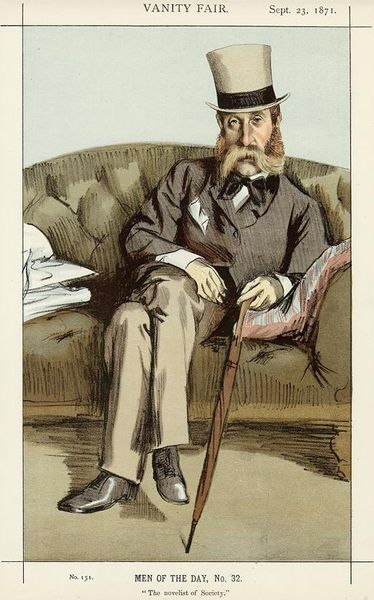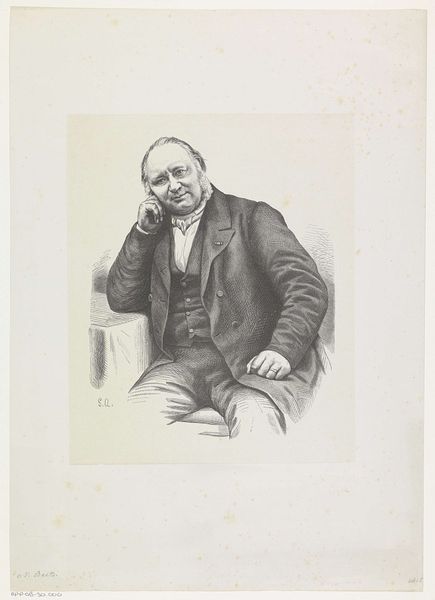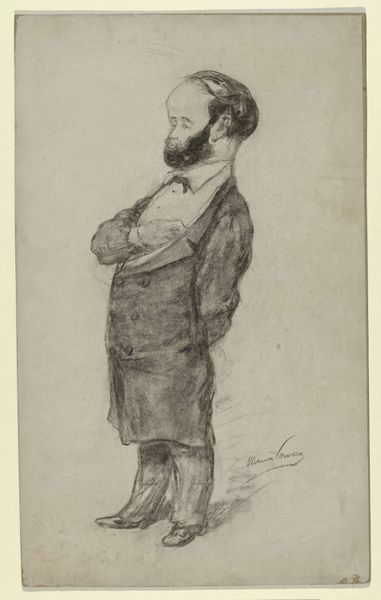
#
portrait
# print
#
caricature
#
charcoal drawing
#
portrait reference
#
male-portraits
#
portrait head and shoulder
#
animal drawing portrait
#
portrait drawing
#
facial study
#
genre-painting
#
facial portrait
#
sitting
#
portrait art
#
fine art portrait
#
celebrity portrait
Copyright: Public domain
Curator: James Tissot created this print in 1871 for Vanity Fair magazine. It's titled "Man of the day No.31° - Caricature of The Duke of Saldanha.” What's your first impression? Editor: He looks self-satisfied, almost like he's been caught enjoying some mischief. His pose is incredibly casual but suggests privilege. I wonder, why this man? Curator: Saldanha was a prominent Portuguese statesman and military figure in the 19th century. Tissot's caricature played on his reputation, presenting a visual commentary on power and status through satire in the illustrated press. Editor: The satire's biting! Note the slight exaggeration of his features – the bulbous nose, the unruly white hair. How does this kind of imagery function politically, reflecting or reinforcing prevailing attitudes towards figures of authority? Curator: Magazines such as Vanity Fair used caricatures to influence public perception and discourse around important individuals in society. These images were consumed in the context of the news and political climate of the moment. So, Tissot isn’t just drawing a portrait; he is making a statement, adding to Saldanha’s constructed persona in the public realm. Editor: It makes me wonder about access and representation. Who was "allowed" to be satirized and how did it reinforce class structures? Consider the "Man of the Day" series – whose days are celebrated, and with what critique? Curator: Good point. Vanity Fair catered to an upper-class audience, and these caricatures were likely meant to be appreciated by those "in the know." The satire often perpetuated stereotypes, potentially reinforcing existing social hierarchies and excluding the voices and representation of marginalized groups. Editor: Looking closely, there’s also the distinct contrast in the rendering of fabrics. The crispness of his bow tie is set against the very loosely rendered contours of his heavy coat. There is something very specific in the way the weight and scale of his wealth is shown. Curator: Exactly. The artist masterfully utilizes the print medium to underscore how societal elites want to be seen – even as they are lampooned. Thank you for those closing insights. Editor: My pleasure. It's a reminder that even seemingly simple images hold complex histories.
Comments
No comments
Be the first to comment and join the conversation on the ultimate creative platform.
